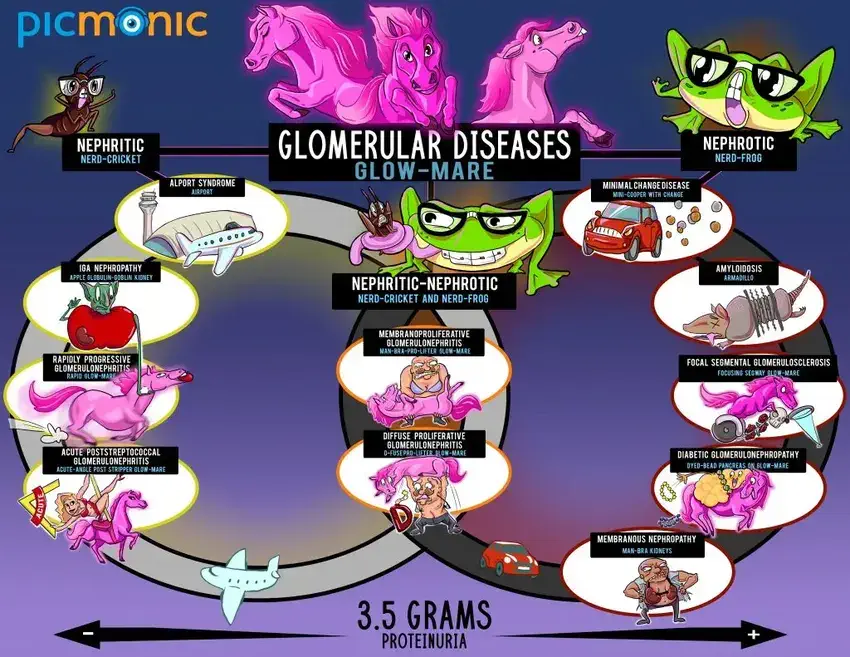Use this infographic to remember all the nephrotic and nephritic syndromes.

Some topics you will learn in this infographic:
Alport syndrome: a genetic cause of nephritic syndrome commonly inherited in an X-linked dominant pattern. It is caused by a mutation in type IV collagen, which is an important structural component of basement membranes present in the kidney, eyes, and ears. Therefore, patients with this syndrome develop hematuria with progression to chronic renal failure along with deafness and various eye disorders.
Rapidly progressive glomerulonephritis (RPGN): a type of nephritic syndrome associated with severe glomerular injury with rapid and progressive loss of renal function. This form of glomerulonephritis typically presents with severe oliguria and other signs of nephritic syndrome including hematuria, hypertension, and mild proteinuria. If untreated, this form can cause death from renal failure within several weeks to months.
Nephritic and Nephrotic Syndrome: DPGN generally presents as both nephritic syndrome and nephrotic syndrome. Nephritic syndrome is a renal disorder characterized by hematuria, proteinuria (<3.5g/L/day), hypertension, and red cell casts in the urine. Nephrotic syndrome is characterized by massive proteinuria (≥3.5 g/day) and hypoalbuminemia (serum albumin ≤30 g/L).
Amyloid: a pathologic proteinaceous substance caused by abnormal folding of proteins that can deposit in the extracellular space in various tissues and organs. There are several distinct forms of amyloid proteins and the most common forms include AL (amyloid light chain) derived from Ig light chains from plasma cells and AA (amyloid associated) derived from a non Ig protein from the liver.
Focal segmental glomerulosclerosis (FSGS): the most common cause of nephrotic syndrome in Hispanics and African Americans. This disease can occur as primary disease but also occurs in association with other conditions including sickle cell disease, HIV infection, interferon therapy and heroin abuse. Microscopically, as the name implies, lesions are characterized by sclerosis of some but not all of the glomeruli, making the inflammation focal as opposed to diffuse.
To learn more, get started with a free Picmonic account.













